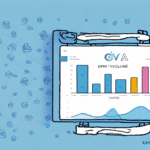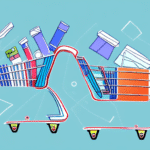Understanding Cart Abandonment and Its Impact
In the world of e-commerce, cart abandonment remains one of the most significant challenges businesses face. Cart abandonment refers to the phenomenon where potential customers add items to their online shopping cart but leave the website without completing the purchase. This represents lost revenue that can significantly impact a business's bottom line.
According to a 2023 study by Baymard Institute, the average cart abandonment rate across all industries is approximately 69.57%, indicating that for every 10 customers who add items to their cart, nearly 7 do not finalize the purchase. Understanding and addressing the factors contributing to this high rate is crucial for improving conversion rates and maximizing revenue.
Analyzing the Reasons Behind Cart Abandonment
The first step in preventing cart abandonment is understanding why it is happening. Analyzing your website’s data and customer feedback can provide valuable insights into the reasons behind cart abandonment.
Common Reasons for Cart Abandonment
- High Shipping Costs: Unexpected or high shipping fees can deter customers from completing their purchases.
- Complicated Checkout Process: Lengthy or confusing checkout procedures can frustrate customers, leading them to abandon their carts.
- Technical Issues: Website glitches or slow loading times can disrupt the shopping experience.
- Lack of Payment Options: Limited payment methods may not cater to all customer preferences.
- Inadequate Product Information: Insufficient details about products can cause hesitation in making a purchase.
- Lack of Trust: Concerns about website security or company credibility can prevent customers from finalizing their orders.
- Unexpected Costs: Additional fees that appear during the checkout process can surprise and discourage customers.
By identifying the most prevalent reasons for cart abandonment on your site, you can develop targeted strategies to address these issues effectively.
Crafting a Seamless Checkout Experience
The checkout process is a critical stage in the customer journey. A seamless and user-friendly checkout experience can significantly reduce cart abandonment rates.
Single-Page Checkout
Implementing a single-page checkout process can streamline the shopping experience by consolidating all necessary information onto one page. This eliminates the need for customers to navigate through multiple pages, reducing the likelihood of abandonment.
Visual Cues and Progress Indicators
Using visual aids such as progress bars and clear call-to-action buttons can guide customers through the checkout process. These elements help set expectations and make the process feel more manageable.
Multiple Payment Options
Offering a variety of payment methods, including credit cards, digital wallets like PayPal and Apple Pay, and other popular options, caters to different customer preferences and increases the chances of completing a sale.
Optimizing Checkout for Mobile Users
With the growing number of consumers shopping on mobile devices, optimizing the checkout process for mobile users is essential to prevent cart abandonment.
Mobile-First Design
Adopting a mobile-first design approach ensures that the checkout process is user-friendly on smaller screens. This involves prioritizing essential elements and simplifying navigation to enhance the mobile shopping experience.
Touch-Friendly Elements
Incorporating touch-friendly buttons and minimizing the need for excessive scrolling or zooming can make the mobile checkout process more intuitive and efficient.
Responsive Design
Ensuring that your website is fully responsive allows it to adapt seamlessly to various screen sizes and devices, providing a consistent and smooth experience for all users.
Leveraging Email and Pop-ups to Recover Abandoned Carts
Recovering lost sales from abandoned carts can be achieved through strategic email campaigns and exit-intent pop-ups.
Cart Abandonment Emails
Sending personalized emails to customers who have abandoned their carts can remind them of the items left behind and encourage them to complete their purchase. Including incentives such as discount codes or free shipping offers can increase the likelihood of conversion.
Exit-Intent Pop-ups
Exit-intent pop-ups appear when a customer is about to leave the website, offering a last-minute incentive to stay and finalize the purchase. This could be a special discount, free shipping, or a unique promotion tailored to the customer's interests.
Creating a Sense of Urgency
Incorporating elements like countdown timers or highlighting limited stock can create a sense of urgency, motivating customers to act quickly and complete their purchase.
Personalizing the Shopping Experience
Personalization enhances the shopping experience by tailoring it to individual customer preferences, which can reduce cart abandonment rates.
Product Recommendations
Utilizing data to recommend products based on a customer's browsing history, purchase behavior, or demographic information can make the shopping experience more relevant and engaging.
Targeted Messaging
Delivering personalized messages based on factors such as geographic location, language, or past interactions can resonate more deeply with customers, fostering a stronger connection and increasing the likelihood of purchase.
Dynamic Pricing
Implementing dynamic pricing strategies that adjust based on customer behavior or market conditions can optimize pricing to better meet customer expectations and drive conversions.
Offering Incentives and Multiple Payment Options
Incentives and diverse payment options play a crucial role in encouraging customers to complete their purchases.
Free Shipping and Discounts
Offering free shipping or discounts can significantly impact a customer's decision to finalize a purchase. According to a Business Insider report, 64% of customers are more likely to complete a purchase if free shipping is available.
Multiple Payment Methods
Providing various payment options, including credit/debit cards, digital wallets like PayPal and Apple Pay, and other popular gateways, ensures that customers can pay using their preferred method, reducing friction in the checkout process.
Secure Payment Processing
Ensuring that the payment process is secure and trustworthy is vital for building customer confidence and preventing cart abandonment due to security concerns.
Enhancing Website Speed and Navigation
A fast and easy-to-navigate website is essential for a positive shopping experience and can significantly reduce cart abandonment rates.
Optimizing Load Times
Utilizing tools like Google PageSpeed Insights can help identify and address factors that slow down your website. Implementing a content delivery network (CDN) can further enhance load times by distributing content more efficiently.
Intuitive Navigation
Designing an intuitive navigation structure with clear labels and categories helps customers find products quickly and easily, reducing the likelihood of frustration and abandonment.
Prominent Search Bar
Including a prominently displayed search bar allows customers to directly locate the products they are interested in, streamlining the shopping process.
Tracking and Analyzing Cart Abandonment Rates
Continuous tracking and analysis of cart abandonment rates are essential for understanding the effectiveness of your strategies and identifying areas for improvement.
Using Analytics Tools
Employing analytics tools such as Google Analytics can help monitor cart abandonment rates and provide insights into customer behavior and trends.
A/B Testing
Conducting A/B tests on different elements of the checkout process, such as button placement, color schemes, and form fields, can determine which variations lead to higher conversion rates.
Customer Feedback
Gathering feedback through surveys or direct interactions can uncover specific issues that may not be apparent through data analysis alone, allowing for more targeted improvements.
Best Practices and Case Studies
Implementing best practices for cart abandonment prevention can lead to substantial improvements in conversion rates and overall sales. Here are some examples of successful strategies:
Case Study 1: Clothing Retailer
A clothing retailer reduced their cart abandonment rate by 14% by implementing a single-page checkout process and offering free shipping on orders over $50. This streamlined the checkout experience and provided a clear incentive for customers to complete their purchases.
Case Study 2: Electronics Retailer
An electronics retailer increased their checkout conversion rate by 8.4% by simplifying their checkout process and adding a progress bar to guide customers through each step. This transparency reduced uncertainty and kept customers engaged throughout the process.
Case Study 3: Beauty Retailer
A beauty retailer achieved a 12% reduction in cart abandonment by utilizing exit-intent pop-ups that offered a 10% discount code to customers about to leave the site. This last-minute incentive successfully encouraged customers to finalize their purchases.
These case studies demonstrate that implementing targeted and effective cart abandonment prevention strategies can lead to significant gains in conversion rates and revenue. By continuously refining your approach and staying attuned to customer needs, your business can overcome the challenges of cart abandonment and achieve sustained growth.




















